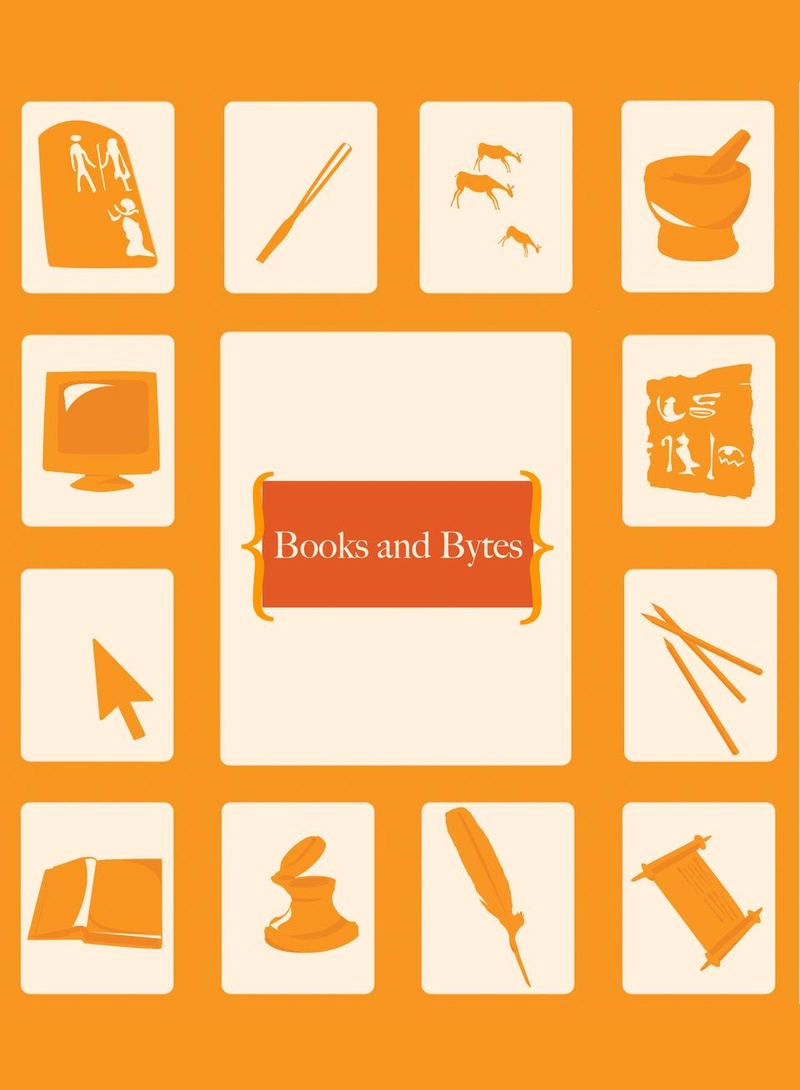In the heart of Maxwell-Dworkin Laboratory, Professor Harry R. Lewis ’68 rests his hands on a desk cluttered with old hard drives and a chunky 15GB iPod, its back open to expose its intricate hardware. This is to be expected: Lewis is a professor of computer science. And yet the walls, the carpeted floor, and even the free countertops are overwhelmingly covered with stacks and stacks of books. A pioneer in the booming digital field, Lewis—like so many of us—still surrounds himself each day with beloved paperbacks and hardcovers.
As the former Dean of Harvard College, Lewis is very familiar with the reading habits of our ‘digital generation.’ Readers can tap glittering iPad screens to jump from chapter to chapter, and respond to ‘tweets’ in between. “The digitalization of reading material—and the death of deep reading—is an interesting debate with violent feelings on both sides,” he says.
There is no doubt that the advent of the Digital Age has transformed how readers read and writers write. In response to these developments, several courses have sprung up in both the History of Science and English departments to investigate the changing relationship between reader and writer in the digital age. In late October the Radcliffe Institute for Advanced Study will also host an interdisciplinary conference entitled “Why Books?” to explore the interaction between literature and technology from an historical perspective.
The experts involved in this discourse all agree that new technology is redefining our experience of literature; they differ only in their focus. Some argue that our critical interpretation of literature must necessarily adjust to these new developments. Others add that writers themselves are adjusting to cater to readers behind LCD screens. However, the interplay between scientific advance and literary work can be traced to authors writing long before the digital age. In the greater historical context of the book, even the shift from print to digital form is not entirely unique; it is but another important transition in the long chain of the book’s evolution.
DIGITAL DIVERSIONS
Though Lewis has devoted his career to the innovations of computer science, he remains a traditionalist when it comes to the written word. Gesturing toward the stacks of bound volumes behind him, Lewis says, “I don’t mean to be a curmudgeon, but it was challenging to read through ‘War and Peace’ before the Kindle. Now it’s difficult to read just a page of ‘War and Peace’ without going to check your email.”
Like many, he is concerned that the attention and imagination required to read difficult texts is disappearing with the fast-paced clicks and taps of electronic books. “I worry that people growing up today are losing the experience of deep reading—of losing yourself entirely in a novel and trying on new identities,” Lewis says. “How can you do so if a hyperlink or an email jolts you back into the here-and-now?”
In a June 2010 essay for the New York Times entitled “My Backlogged Pages,” author John Feffer explains his similar reluctance to give up his physical library. He links their physical presence to their imaginative power. “They are just not books after all,” he writes. “Provided I hold on to this library, I can still pretend that I will be all the people that I imagined I would be as a teenager, as I wandered the church book sale and selected gifts for my future selves.”
One person who seeks to understand the dilemma of the reader in this digital era is Associate Professor Adelheid Voskuhl in the History of Science department. Voskuhl is an historian of technology who uses literary theory to explore the relationship between technology, the text, and its author. Her new course, History of Science 284: “Technology and the Text: Machines and Discourse in Historical and Literary Inquiry,” questions how our interpretation of text and its media may change in the future.
Beginning half a century ago, she says, literary theorists started to think that not a single element of the text—about the literature itself or its medium—could be neglected in critical interpretation. “In the 1960s, scholars no longer took for granted that text is simply what’s written on the page—there is always a medium for the text, an author, and an intention,” Voskuhl says.
However, this theory came into being in a world of print. “Even if I were to attempt the standard practice of interpreting a poem, how would my interpretation change from print to digital media? Would my computer be a part of the text itself? Does the act of clicking a hyperlink bring the autonomy of the reader and writer into question?” Voskuhl says. “In the digital age, we theorists are struggling to find what we can translate from those earlier decades.”
New technologies certainly require a more nuanced theoretical approach. However, Voskuhl remains faithful to her pursuit. “Theories of technology can be wacky and abstract, but it is vital to engage in intensive theoretical reflection. Without it, we run the risk of approaching the Kindle or the iPad in a commonplace, bland kind of way,” she says.
A TECHNOLOGICAL TRADEOFF
These technologies, and the way they are consumed, also influence the way that writers cater to their readers. Feffer describes his own dilemmas as a writer in a world of digital innovation. “For me, my desire to communicate rapidly with as wide an audience as possible is juxtaposed with my nostalgia for readers with the luxury to read and digest my work thoughtfully,” he says.
This goal, Feffer continues, is hard to reach. “We live in a utilitarian time, and Americans think first about usefulness and purpose—what we read is linked first and foremost to what we do.” With its long threads of blog commentary and never-ending tweets, digital media is a prime example of this bias towards utility.
Read more in Arts
‘Lonely Avenue,’ Crowded With Talents













